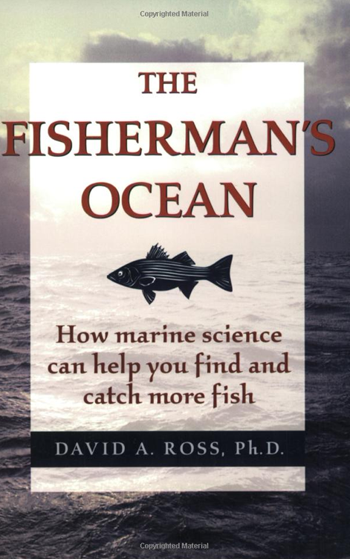The following excerpt is from the book The Fisherman’s Ocean by David A. Ross, Ph.D. Reprinted with permission from Stackpole Books, Mechanicsburg, Pennsylvania.
The Sense of Hearing
[dropcap]T[/dropcap]he ocean is a noisy place, especially below the surface. Sounds come from surface waves, ship engines and propellers, underwater earthquakes and volcanoes, raindrops falling on the surface, fish swimming through the water, whales singing, animals feeding or reproducing, or literally anything that moves or creates a vibration or turbulence in the water—including the motion of your lure. The coastal region is particularly noisy due to the turbulence created by breaking waves. One of the many problems scientists have in studying sound in the ocean and how it affects fish is that there are so many different sounds, coming from so many different sources (including from the fish themselves), that it’s difficult to judge exactly which sound causes what reactions among fish.
Sea water is almost a thousand times denser than air, and because of this, sound travels better, farther, and faster through the water of the ocean than through the atmosphere. For instance, the speed of sound in the ocean is about a mile a second, or almost five times faster than its speed in the atmosphere. In either environment, sound decreases in intensity as it travels away from its source. Water, however, is a very good medium for sound propagation; some sounds can travel for considerable distances in the ocean, whereas the same sound made in the atmosphere might quickly become inaudible.
A discontinuity in one of the physical characteristics of water, such as an abrupt change in temperature with depth, can form an interface that will reflect sound and in doing so increase the distance that the sound can travel. For example, there are “sound channels” in the ocean, and sound made in these channels can travel literally thousands of miles. Interestingly, water is a much more friendly environment for sound than for light, which is rapidly attenuated in water. Fish, because of the wide range of noise in their environment and the importance of sound to their survival, have developed unique systems for detecting sound in the ocean.
A sound made in the ocean has two effects. The first, called “particle displacement,” causes a back-and-forth motion of particles in the water. The particle displacement effect, often called the “near field,” is more important close to the source of the sound. Sounds in the near field, Twhich can be about 20 to 30 feet from the source, are detected by a fish’s inner ear or by its lateral line.
The second effect, called “sound pressure,” is a change in water pressure that resembles a sinusoidal or sine wave moving through the water. This effect, often called the “far field,” is more important farther away from the source of the sound. Far-field sounds are detected by the fish’s inner ear and, if it has one, by its swimbladder, which often works as an amplifier or resonator in combination with the inner ear.
In next Wednesday’s Fish Facts Ross explains more about fish SENSES and how to apply them to improve your fish-catch stats.



